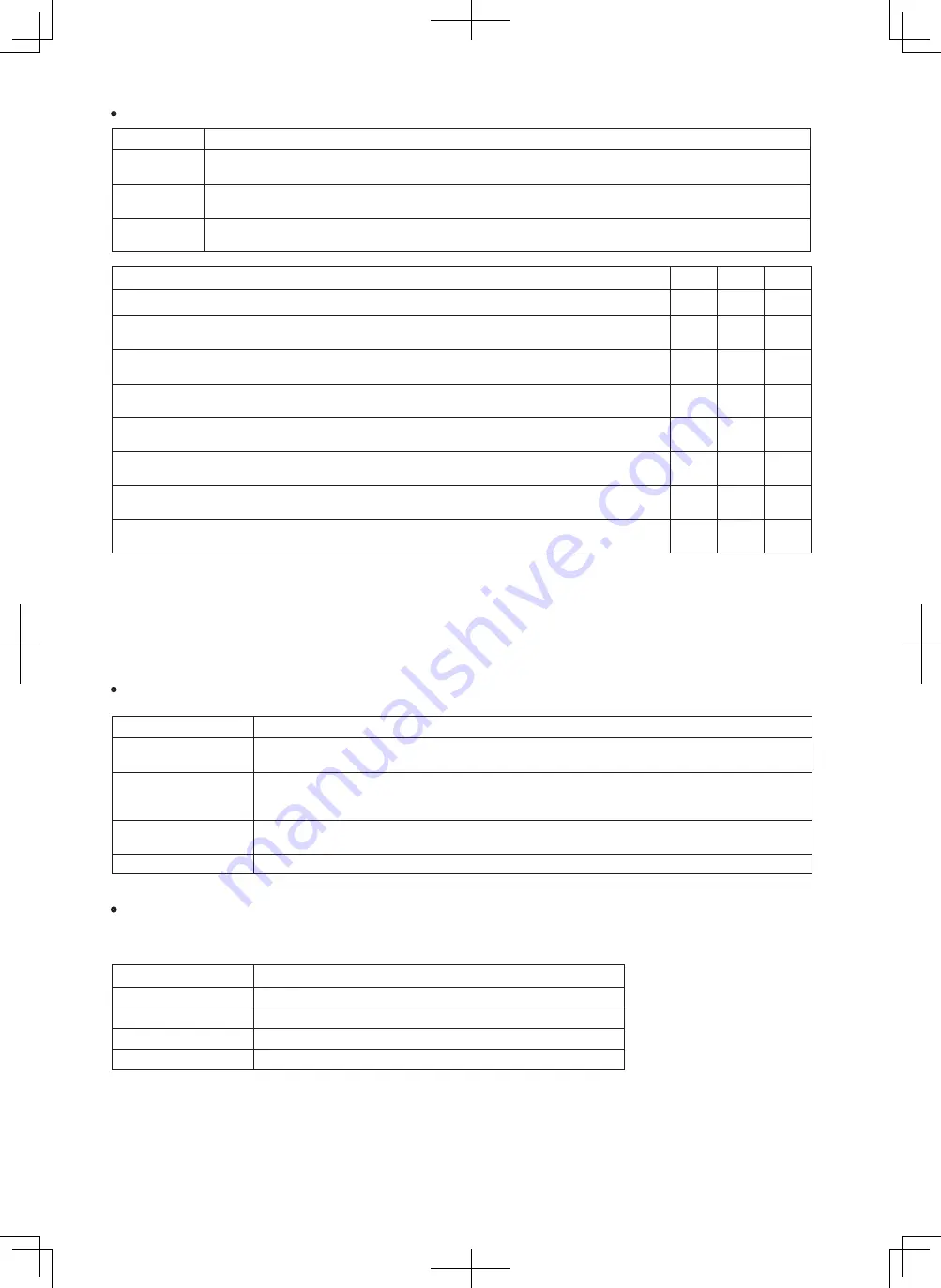
60
• If the alarm display “E15”, “E16” and “E20” appear after auto address setting began, check the following items.
Alarm display
Alarm contents
E15
Recognized number of indoor units at the time of auto address setting are fewer than that of indoor units set by
SW3 and SW4 on outdoor main unit P.C. board.
E16
Recognized number of indoor units at the time of auto address setting are more than that of indoor units set by
SW3 and SW4 on outdoor main unit P.C. board.
E20
Outdoor unit could not entirely receive serial communication signal from the indoor unit within 90 seconds after
auto address setting began.
Check
E15
E16
E20
Have you forgotten to turn ON power to indoor unit?
Are indoor and outdoor control wiring connected properly?
(Check for incorrect wiring to open & short-circuit, terminal plug and remote control terminal.)
Is remote control wiring connected properly? (Check for open & short-circuit, wrong connection to
indoor/outdoor unit control wiring terminal, inter-unit control wiring.)
Are the number of the connecting indoor units set by SW3 and SW4 of outdoor main unit control P.C.
board connected properly?
Is additional appropriate amount of refrigerant charge?
(Compressor ON at the time of auto address setting)
Is the refrigerant tubing connected properly?
(Compressor ON at the time of auto address setting)
Are E1 and E3 sensors of indoor unit normal?
(Compressor ON at the time of auto address setting)
Are there any wrong system address installed in indoor units caused by manual or incorrect auto
address control?
1) When auto address setting from outdoor main unit control P.C. board or remote controller begins, “Under Setting” appears on the
remote controller as for normal indoor units under the inter-unit control wirings and remote control wirings.
LEDs 1 and 2 indicators on outdoor main unit control P.C. board blink alternately.
2) If there is an error at the inter-unit control wiring of the remote controller when in the indoor unit group control, address setting may
not occasionally be made although “under setting” is displayed.
3) Although the alarm “E15” and “E16” are displayed, addresses will be installed in the recognized indoor units.
The installed addresses can be checked by the remote controller. See the section “Checking the indoor unit address”.
•
When operating the remote controller after auto address setting completed (LEDs 1 and 2 indicators on outdoor main unit control P.C.
board go out), correct the symptom if the following alarms appear on the remote controller.
Remote control display
Cause
No display
Remote controller is not connected properly. (Power failure)
When auto address setting was completed, the power of indoor unit was turned off.
E01
Remote controller is not connected properly. (Receiving failure from remote control)
Indoor unit address was mistakenly controlled by undesired indoor unit remote controller.
(Impossible to communicate with outdoor unit)
E02
Remote controller is not connected properly.
(Impossible to communicate with indoor unit by remote controller)
P09
Connector of indoor unit ceiling panel is not connected properly.
If any other alarm appear on the display, refer to the Test Run Service Manual.
• Alarm display can be checked by the outdoor maintenance remote controller. When operating, refer to the Test Run Service Manual.
Alarm display can also be checked by number of blinking of LEDs 1 and 2 on outdoor unit control P.C. board.
(See the section “How to know LEDs 1 and 2 alarm display on outdoor unit control P.C. board” under the section “7-7. Self-Diagnosis
Function Table and Contents of Alarm Display”.
Remote control display
Alarm contents
E06
Outdoor unit receiving failure from indoor unit
E12
Prohibit starting auto address setting
E15
Auto address alarm (A small number of indoor units)
E16
Auto address alarm (A large number of indoor units)
00_340994_2WAY_Eng.indb 60
2022/8/4 14:28:55









































